Canterbury
Explore hidden histories, historic photos, and things you never knew about Canterbury from the collections and archives of Historic England.
Discover your local listed buildings and places
Introducing some of Canterbury's most historic sites, included in the National Heritage List for England. Some of these captions have been summarised by AI. Click through for the official List entry. Skip this section and go to place by numbers
Canterbury Cathedral, St. Augustine's Abbey and St. Marti…
Canterbury
The official listing for all World Heritage sites is held by UNESCO and can be found on their website.
Reculver Saxon Shore fort, Anglo-Saxon monastery and asso…
Canterbury
The Reculver site includes a Saxon Shore fort and a rare pre-Conquest monastery, significant for its strategic military and early Christian historical importance.
Eastbridge Hospital
Canterbury
Eastbridge Hospital, founded in 1180 for pilgrims visiting St Thomas Becket's shrine, was restored in the 20th century. It features a medieval chapel and an original dormitory undercroft.
Broome Park
Barham
Broome Park, a historic estate developed from the 17th century, includes formal gardens by Detmar Blow for Lord Kitchener and now serves as a golf and country club.
Dane John Mound and Roman and medieval remains in Dane Jo…
Canterbury
The Dane John Mound, a motte and bailey castle, embodies a significant Norman fortification tradition with historical importance linked to its Roman burial mound origins.
Church of St Nicholas
Harbledown and Rough Common
Church, originally part of a leprosy hospital, late C11 with C12 and C14 additions.
Dane John Gardens
Canterbury
Dane John Gardens transformed from burials to public gardens by Alderman James Simmons in 1790, featuring historical mound, terrace walk, and city views.
Chapel of St Pancras Ruins Remains of St Augustine's Abbey
Canterbury
The Abbey, dating from 598 AD, features Roman bricks and houses relics of religious figures, including St Augustine. The Norman nave wall is well-preserved.
Greyfriars, Canterbury
Canterbury
Franciscan friary, founded 1224 by Agnellus of Pisa, rebuilt 1267-1325, dissolved 1538.(NB The layout of the historic centre of Canterbury is determined by the north-west/south-east axis of...
Canterbury War Memorial, Buttermarket, Canterbury
Canterbury
War memorial unveiled on 10 October 1921. The architect was Professor Arthur Beresford Pite MA FRIBA and the sculptor was Benjamin Clemens. The bronze tablets were added the following year.
Bigberry camp
Harbledown and Rough Common
Bigbury Camp is an Iron Age hillfort notable for its massive earthworks, significant archaeological remains, and historical importance in understanding Iron Age society.
Church of St Martin
Herne and Broomfield
Almost wholly rebuilt in the mid C14, but the arch to the S chapel is C13 and the NW tower is early C14. The N porch is dated to 1350.
Canterbury Castle
Canterbury
The scheduled monument includes the keep of the tower keep castle at Canterbury, part of its bailey, a sample of land just outside the bailey, the postern gate of the later enclosure castle...
St Augustine's Abbey
Canterbury
St Augustine's Abbey, established by St Augustine in 597, marked a pivotal early monastic site in England, later a royal palace, and now a UNESCO World Heritage Site.
The Archbishop's Palace or the Old Palace
Canterbury
The Archbishop's Palace, rebuilt in 1896 by W.D Caröe, retains elements from the 14th and 16th centuries, including old buttresses and a trefoil-headed window.
Herne Windmill
Herne and Broomfield
Herne Windmill, built in 1781, is a smock-type windmill with a tarred brick octagonal round-house and a hooded cap. Its sails are missing, but the fantail is intact.
Church of St John the Baptist
Barham
The Church of St John the Baptist is a stone cruciform building with a north and west porch tower and a copper spire, dating back to the 13th and 14th centuries.
Diocesan and Payne Smith Church of England Primary School…
Canterbury
School. Designed in 1847 as National Schools by William Butterfield (1814-1900) in Early English style, the builder Edward Homersham.
War memorial cross at The King's School, Canterbury
Canterbury
First World War memorial designed by Sir Herbert Baker FRIBA RA, unveiled 1921, with later additions for the Second World War.
Broome Park Hotel
Barham
Broome Park Hotel, built by Sir Basil Dixwell from 1635-1638, is a historically significant mansion known for its architectural evolution under the Dixwell and Oxenden families, and later...
Church of St Margaret
Womenswold
The Church of St Margaret features Norman architecture, a 13th-century tower, and notable wall monuments, including works by Sid Robert Taylor, reflecting its historic significance.
Church of St John
Ickham and Well
The Church of St John features Early English architecture, a Norman doorway, C14 effigies, and was restored in 1901. Its churchyard holds C18 headstones.
Church of St Mildred
Canterbury
The Church of St Mildred is important for its Saxon walling, medieval features, fine woodwork, and historical stained glass, making it a rare surviving Anglo-Saxon church in Kent.
The Church of St Dunstan's Without the West Gate
Canterbury
The nave is late C11 or early C12 in origin. The NW chapel was built in 1330. The S aisle is late C14 and the SW tower is late C14 or early C15.
Barrow field on Breach Down, Derringstone
Barham
The barrow field at Derringstone Downs holds at least 19 Anglo-Saxon burial mounds, revealing significant archaeological information due to well-preserved remains and partial excavations.
Watergate Cottage Watergate House
Fordwich
Watergate Cottage and Watergate House, originally a Manor House and later a Rectory, display architectural elements from the 15th to 19th centuries, including a C15 stone fireplace.
Church of All Saints
Whitstable
Perpendicular C15 south west tower and north aisle arcade. Church otherwise rebuilt in 1875-76 by Charles Barry Jr. South aisle and west porch added in 1962, in a sympathetic style.
The Former Blackfriars Monastery
Canterbury
A former Blackfriars Monastery from the 13th century, featuring flint facing, stone quoins, and a restored tiled roof, along with 18th-century brick extension.
The Old Stone House
Wickhambreaux
The Old Stone House is a Grade II* listed building, dating back to the 16th century, notable for its stone and flint chequer work and crow-stepped gables.
The Guildhall
Canterbury
The medieval undercroft and remnants of a guildhall in Canterbury survive well, featuring significant architectural details and holding archaeological potential.
Entrance Lodge, Octagonal Perimeter Wall, Octagon and A, …
Canterbury
The former Canterbury Prison, comprising the entrance lodge, perimeter wall, Octagon and A, B and C wings. The prison was designed by the architect George Byfield and completed in 1808.
Church of St Alphege With St Margaret
Canterbury
The church was almost its present size in the late C12 or early C13. NW tower, N chapel, chancel and nave are all late C12 or early C13 in origin. Some C14 windows.
The School Hall
Sturry
Originally part of St Augustine's Abbey grange, this early 16th-century timber-framed building features a tiled roof and distinctive red brick and weatherboarding.
Church of All Saints
Westbere
The Church of All Saints is primarily a 14th-century structure, featuring a chancel with Pre-Conquest masonry, a triple arched bellcote, and notable 17th and 18th-century monuments.
Church of St Mary
Wickhambreaux
The Church of St Mary in Stodmarsh, a 13th-century flint-built church with mediaeval elements, was restored in the late 19th century by Cowell and Bromley.
Church of St Mary
Lower Hardres and Nackington
The Church of St Mary, built mostly in the 13th century, features Norman nave windows and a 19th-century porch, with notable stained glass and 18th-century headstones.
Christchurch Gateway
Canterbury
Christchurch Gateway, built in 1517 and restored in the 1930s, features octagonal turrets and heraldic shields commemorating Prince Arthur, Henry VII's eldest son.
Explore more
Search for more listed placesCanterbury through time
This timeline shows the first period of use for buildings and places on the National Heritage List for England, just one of the details recorded for every list entry. Click around to see how Canterbury changes over time. Skip this section and go to aerial photos
Prehistoric Before AD 43
Prehistory covers a million years of human occupation before the Roman invasion, from hunter-gatherers of several human species, including Neanderthals, to more recent herders and farmers. It was a time of developing technologies and belief systems, involving contact with and migration from Europe, all reflected in the variety of artefact and monument types characteristic of particular prehistoric periods.
Roman AD 43 to AD 410
Britain was invaded by four legions of the Roman army in AD 43, who relatively rapidly conquered England from landing points in Kent. Parts of Wales and Scotland soon followed.
Roman culture brought urbanism, monumental buildings, wide-ranging religious beliefs, writing, and strong social hierarchy. The Roman administrative system was withdrawn in AD 410.
Early medieval AD 410 to AD 1066
This period, often associated in England with Anglo-Saxons and Vikings, saw a reduction in urban living from the Roman period and increased migration from northern Europe.
Traces of this period can be found in cemeteries, particularly in artefacts and in some of the very early churches, as this period also saw the growth of Christianity in Britain.
Medieval AD 1066 to AD 1540
This period, sometimes known as the Middle Ages, began with the Norman invasion in AD 1066. It saw a significant rise in military and defensive buildings such as castles and earthworks, as well as religious houses dominating a largely agricultural landscape.
The monarchy and Church dominated the period, which also saw the break with the Roman Catholic Church and the English reformation.
Post medieval AD 1540 to AD 1901
The Post-Medieval period brought seismic changes to life in England, with religious reformation leading to the democratization of worship and the destruction of hundreds of religious houses.
In parallel, there was a huge expansion of scientific study and enlightenment that permanently altered the nation's social structure and landscape. Industrialization and mass production lead to wider global trade, emigration, and immigration.
20th century AD 1901 to AD 2000
The 20th century saw an incredible expansion of England's transport networks, with suburban growth shadowing rapid infrastructural expansion. The establishment of state schools, hospitals, and modern technical colleges, with new architectural styles, radically changed the appearance of towns and cities.
Two catastrophic world wars and the 1918 pandemic also brought unprecedented change, altering England's built environment and social structures forever.
Prehistoric Before AD 43
Prehistory covers a million years of human occupation before the Roman invasion, from hunter-gatherers of several human species, including Neanderthals, to more recent herders and farmers. It was a time of developing technologies and belief systems, involving contact with and migration from Europe, all reflected in the variety of artefact and monument types characteristic of particular prehistoric periods.
Roman AD 43 to AD 410
Britain was invaded by four legions of the Roman army in AD 43, who relatively rapidly conquered England from landing points in Kent. Parts of Wales and Scotland soon followed.
Roman culture brought urbanism, monumental buildings, wide-ranging religious beliefs, writing, and strong social hierarchy. The Roman administrative system was withdrawn in AD 410.
Early medieval AD 410 to AD 1066
This period, often associated in England with Anglo-Saxons and Vikings, saw a reduction in urban living from the Roman period and increased migration from northern Europe.
Traces of this period can be found in cemeteries, particularly in artefacts and in some of the very early churches, as this period also saw the growth of Christianity in Britain.
Medieval AD 1066 to AD 1540
This period, sometimes known as the Middle Ages, began with the Norman invasion in AD 1066. It saw a significant rise in military and defensive buildings such as castles and earthworks, as well as religious houses dominating a largely agricultural landscape.
The monarchy and Church dominated the period, which also saw the break with the Roman Catholic Church and the English reformation.
Post medieval AD 1540 to AD 1901
The Post-Medieval period brought seismic changes to life in England, with religious reformation leading to the democratization of worship and the destruction of hundreds of religious houses.
In parallel, there was a huge expansion of scientific study and enlightenment that permanently altered the nation's social structure and landscape. Industrialization and mass production lead to wider global trade, emigration, and immigration.
20th century AD 1901 to AD 2000
The 20th century saw an incredible expansion of England's transport networks, with suburban growth shadowing rapid infrastructural expansion. The establishment of state schools, hospitals, and modern technical colleges, with new architectural styles, radically changed the appearance of towns and cities.
Two catastrophic world wars and the 1918 pandemic also brought unprecedented change, altering England's built environment and social structures forever.
Aerial photos of Canterbury
Aerial photography helps reveal secrets of England's changing landscapes that are impossible to see from the ground. Skip this section and go to archive images
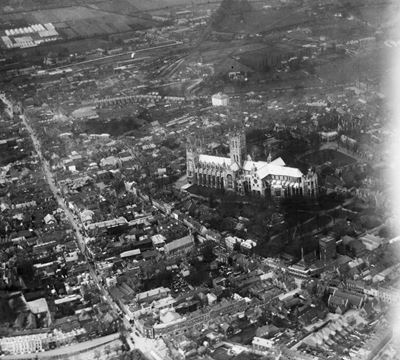
Canterbury
Christchurch Cathedral, Canterbury, 1920
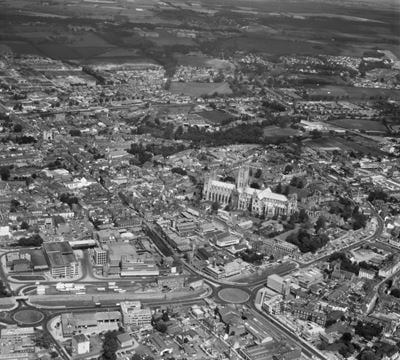
Canterbury
View looking north over the Cathedral and city centre, Canterbury, 1973
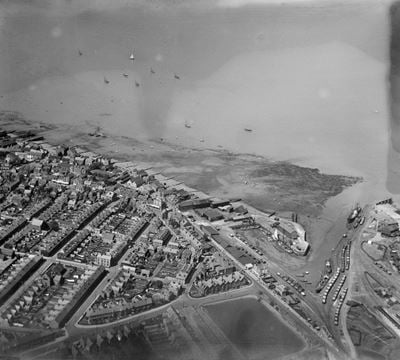
Whitstable
The Harbour and environs, Whitstable, 1923
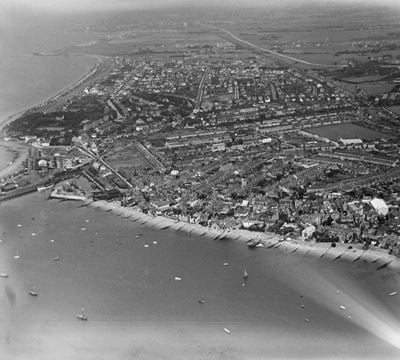
Whitstable
The town, Whitstable, 1937
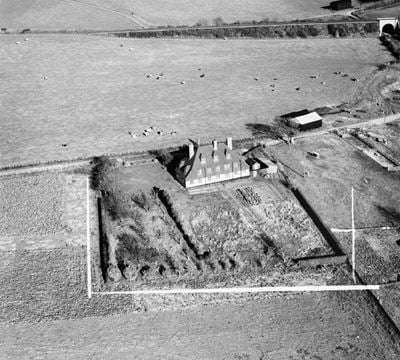
Adisham
The Rectory, Adisham, 1952
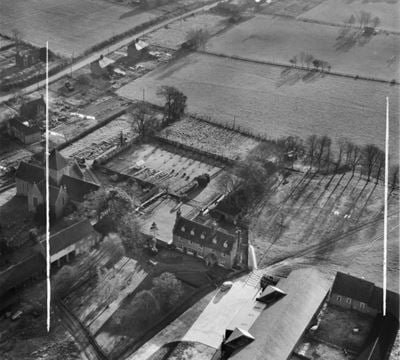
Adisham
Adisham Court, Adisham, 1952
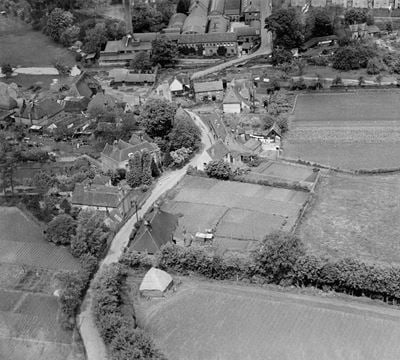
Chartham
Rattington Street, Chartham, 1932

Chartham
Chartham Paper Mill, Chartham, 1949

Canterbury
Cricket match in progress at the County Cricket Ground (St Lawrence Ground), Canterbury, 1927
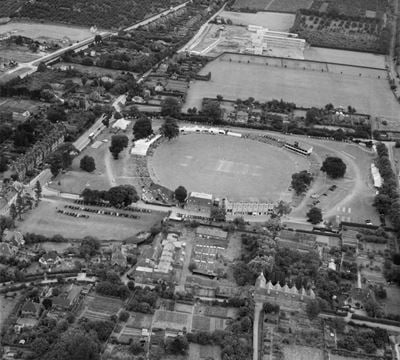
Canterbury
Canterbury, a cricket match in progress at the St Lawrence Ground, 1950
Canterbury in the Historic England Archive
The Historic England Archive cares for over 15 million images, dating from the 1850s to the present day. Discover stunning images of Canterbury's past. Skip this section and go to stories about heritage
Charles George Harper Collection
Canterbury, Kent
Date created: 1892 - 1933
Broome Park seen from the north-east, with a group of people on the lawn in the foreground
Eric de Mare
Canterbury, Kent
Date created: 1956
Exterior elevation of St Stephens Maltings in Canterbury showing the Mackeson and Company's Maltings.
John Gay Collection: Counties
Street End, Canterbury, Kent
Date created: 1950 - 1956
A white cat sitting on the gate of a pig pen in front of a black weatherboarded tiled and thatched barn, with the spars holding the thatch visible
London, Midland and Scottish Railway Company
Patrixbourne, Canterbury, Kent
Date created: 06 Jul 1909
The south side of St Mary's Church viewed from the road
Nigel Temple Collection of Postcards of Parks and Gardens
Canterbury, Kent
Date created: 1900 - 1930
GENERAL VIEW FROM THE AVENUE
Walter Scott
Canterbury, Kent
Date created: 1920 - 1940
Exterior view showing a First World War tank in front of Canterbury Town Walls
Charles George Harper Collection
Barham Downs, Canterbury, Kent
Date created: 1892 - 1933
A man on a bicycle riding past a fingerpost along the road on Barham Downs
John Gay Collection: Counties
Street End, Canterbury, Kent
Date created: 1950s - 1960s
View of cows in the farmyard at Street End Farm, Lower Hardres
London, Midland and Scottish Railway Company
Patrixbourne, Canterbury, Kent
Date created: 06 Jul 1909
The Norman doorway with a carved tympanum and gable, on the south side of the tower at St Mary's Church
Nigel Temple Collection of Postcards of Parks and Gardens
Canterbury, Kent
Date created: 1907 - 1912
GENERAL VIEW SHOWING DANE JOHN FROM THE MOUND WITH BANDSTAND IN THE FOREGROUND
Stories about heritage in your local area
Historic England publishes news, blogs, research, videos, and podcasts celebrating England's rich heritage. Discover the stories we have about Canterbury. Skip this section and go to education
A Brief Introduction to Semi-Detached Housing
Mentions Aucher Close
Semi-detached housing is the most prevalent type of housing in England today, making up one third of the housing stock.
The History of England’s Village Greens
Mentions Borstal Hill Windmill
The origins of village greens in England date back to the early Middle Ages. Village greens are open spaces that can be registered.
What Is the Oldest Building in England?
Mentions Church of St Martin
From the oldest church to archaeological remains, here are the contenders for England's oldest building.
5 Things to Know About Coronations
Mentions Christchurch Cathedral
Discover the history and heritage behind the ancient English coronation ceremony.
10 Historic Sites That Tell the Story of Katherine of Aragon in England
Mentions Christchurch Cathedral
Explore the significance of places visited or lived in by Katherine of Aragon, the first wife of Henry VIII.
A Guide to English Gothic Architecture
Mentions Canterbury Cathedral, St. Augustine's Abbey and St. Martin's Church
Learn how to identify the features and characteristics of medieval Gothic architecture in England.
12 of the Oldest Tea Rooms in England
Mentions The Barn Tea Rooms
Tea rooms first appeared in England in the 18th century, and the first tea room, Twinings, has stood in the same spot for over 300 years.
13 Roman Ruins to Visit in England
Mentions Remains of Roman Town House
Remains of Roman Britain can be found everywhere, from walls left in our cities to forts and villas in the countryside.
10 Dramatic Coastal Sites to Visit this Summer
Mentions Reculver Saxon Shore fort, Anglo-Saxon monastery and associated remains
Ten coastal sites in England, which are open to the public and worth a visit all year round.
The Mysterious Case of the Witch Bottle
Mentions Ducking Stool in Grounds of No 1
Discover how Bellarmine jugs may have been used to ward off witches for over 300 years
6 Stunning Lighthouses (From 1AD to the Present Day)
Mentions Reculver Saxon Shore fort, Anglo-Saxon monastery and associated remains
Trinity House, the lighthouse authority for England and Wales, celebrates its 500th anniversary today after being granted a charter by Henry VIII on...
Mentions Canterbury
Hear about the capital of English Christianity, the oldest wooden church in England and the importance of community for Sikhs in this episode, hosted...
Canterbury, Greensted and Europe’s largest Guru Nanak Gurdwara
Hear about the capital of English Christianity, the oldest wooden church in England and the importance of community for Sikhs in this episode, hosted by Dr Suzannah Lipscomb. The 100 places featured in this series have been nominated by the public and chosen by a panel of judges. Together they help tell England’s fascinating history. Irreplaceable: A History of England in 100 Places is a Historic England podcast, sponsored by specialist insurer Ecclesiastical ecclesiastical.com
Charing Palace: Historic England Grant Helps Save Exceptional Medieval Hall in Kent
Mentions Canterbury
A £300,000 grant from Historic England has funded urgent repairs to the vast Grade I listed Great Hall at Charing Palace in rural Kent.
The Serious Business of Holidaymaking
Mentions Canterbury
A look at the history of tourism and tourist destinations in Britain.
Heritage at Risk in the South East Revealed
Mentions Dane John Mound and Roman and medieval remains in Dane John Garden, Canterbury
25 sites have been saved and 15 sites added to the Heritage at Risk Register 2023 in the South East of England.
Heritage and Craft Workers Across England Given a Helping Hand
Mentions Canterbury
142 historic sites across England are receiving grants worth £35 million through the government’s Culture Recovery Fund.
Heritage Across the Country Benefits from Latest Funding from the Culture Recovery Fund
Mentions Canterbury
Over 470 heritage organisations across the country to benefit from the second round of Culture Recovery Fund grants
Top 10 Faith & Belief places chosen to tell A History of England in 100 Places
Mentions Christchurch Cathedral, Canterbury
Top 10 faith and belief places in England chosen
National Collection of Sir Herbert Baker’s War Memorials Recognised
Mentions County of Kent War Memorial Cross, War memorial cross at The King's School, Canterbury, Canterbury
15 First World War memorials by Sir Herbert Baker have been listed or upgraded to commemorate the centenary of the Commonwealth War Graves Commission.
Public Asked to Chronicle the Nation’s Missing History
Mentions Ducking Stool in Grounds of No 1, Canterbury
The nation's list of historic buildings and places is now open to public contributions for the first time ever.
Canterbury's social history through photos
Over 10,000 images from the Historic England Archive have been specially selected and re-captioned for teachers, students, and anyone who wants to learn more about their local area. Skip this section and go to grant-aided places
Whitstable Harbour, Whitstable, Kent
Period: Victorian (1837 - 1901)
The harbour at Whitstable opened in circa 1832 and can be seen here with large sailing vessels moored by the harbour walls.
Westgate, Canterbury, Kent
Period: Medieval (Middle Ages) (1066 - 1484)
The Westgate was originally one of seven gates to the city of Canterbury.
Westgate, Canterbury, Kent
Westgate, Canterbury, Kent
Period: 1960s (1960 - 1969)
A view of the Westgate which spans across London Road. The gate was built by Archbishop Sudbury in circa 1380.
Westgate, Canterbury, Kent
Town Hall, Fordwich, Kent
Period: Medieval (Middle Ages) (1066 - 1484)
Fordwich Town Hall possibly dates from the early 15th century.
Town Hall, Fordwich, Kent
The Weavers, St Peters Street, Canterbury
Period: Tudor (1485 - 1602)
This building is dated 1500 and was one of the workshops of the Huguenot weavers.
The Weavers, St Peters Street, Canterbury
The Post Office, Wickhambreaux, Kent
Period: 1920s (1920 - 1929)
A view with the mill race in the foreground. The building is strikingly decorated in chequer work of stone and knapped flints.
The Post Office, Wickhambreaux, Kent
The Old Leper Church Of St Nicholas, Harbledown, Kent
Period: Medieval (Middle Ages) (1066 - 1484)
This church was built as part of a leper hospital. It was founded by Lanfranc, archbishop of Canterbury (1070-89), in about 1085.
The Old Leper Church Of St Nicholas, Harbledown, Kent
The 'Weavers', Canterbury, Kent
Period: 1960s (1960 - 1969)
These timber-framed buildings on King's Bridge were adapted in the 17th century for the looms of the Walloon weavers.
The 'Weavers', Canterbury, Kent
Discover more
Ready for more local stories? Take a look at these other places nearby


